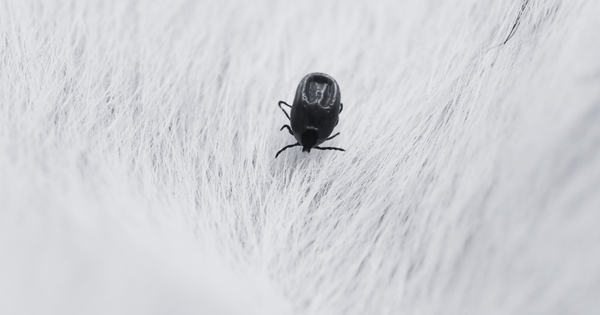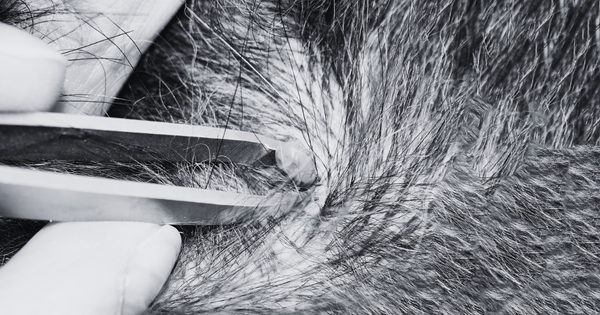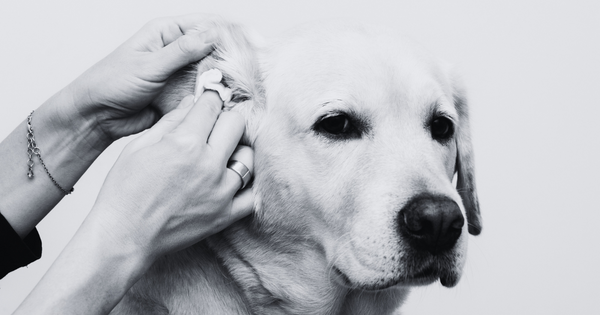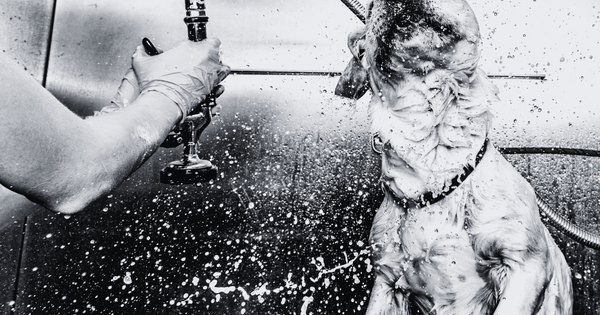
Ticks might be small, but their impact on your dog's health can be huge. These tiny parasites are not just a nuisance; they are vectors for serious diseases such as Lyme disease, which can lead to severe long-term health issues for your furry friend. Learning how to remove ticks from dogs promptly and correctly is crucial, not just to alleviate immediate discomfort but to prevent the onset of these diseases. As we delve into understanding ticks and the risks they pose, you'll appreciate why mastering the art of dog tick removal is an essential skill for every dog owner. Discover the best techniques to spot, remove, and prevent ticks effectively, keeping your beloved pet healthy and happy.
Here is an Instagram video where I provide a brief answer.
Understanding Ticks and Their Risks

Ticks, small as they might appear, are formidable parasites with a knack for finding their way onto our dogs during outdoor adventures. They have specialized mouthparts that allow them to anchor securely onto the skin, where they can suck blood for several days. This prolonged feeding session is what makes them particularly good at transmitting diseases.
The list of ailments ticks can pass on to our dogs is alarmingly extensive. Lyme disease is perhaps the most well-known, but it's just the start. Ticks are also carriers of Rocky Mountain spotted fever, ehrlichiosis, and babesiosis, among others. Each of these diseases can severely impact your dog's health, ranging from mild symptoms like fever and lethargy to severe complications such as kidney failure or even death.
Recognizing tick-infested areas is crucial for preventing these parasites from getting a free ride on your dog. Ticks thrive in wooded, grassy, or bushy areas, lying in wait to latch onto animals that pass by. Being mindful of these environments during hikes or walks, and taking preventive actions like using tick repellents, can significantly reduce the risk of tick bites.
Preparing for Tick Removal

When it comes to dog tick removal, being well-prepared can make all the difference. Essential tools for this task include fine-tipped tweezers or a specialized tick removal tool, which can help you extract the tick efficiently without squeezing its body or leaving the mouthparts embedded in your dog's skin. Don’t forget to wear disposable gloves to protect yourself from potential infections.
Creating a calm environment is equally important when removing a tick from your dog. Choose a quiet, comfortable space where your dog feels at ease. Speak in a soothing tone and perhaps have some treats on hand to keep them relaxed. It's best to have someone help you hold your pet still if they tend to wiggle or feel anxious.
Remember, swift and safe dog tick removal is crucial to prevent disease transmission. If you’re unsure about how to properly remove a tick, it's always a good idea to consult with your veterinarian or watch instructional videos from reputable sources. After removing the tick, cleanse the area with antiseptic and wash your hands thoroughly. Monitoring the bite site and your dog’s health over the next few weeks is vital; any unusual signs should prompt a visit to the vet.
By understanding the risks associated with ticks and preparing properly for their removal, you're taking significant steps towards safeguarding your dog's health and your peace of mind.
How to Remove Ticks From Dogs: Step-by-Step Guide to Dog Tick Removal
Locating the Tick

Wondering where those sneaky ticks could be hiding on your dog? It’s essential to perform a thorough check, especially after your dog has been in areas likely to harbor ticks. Start by gently running your fingers through your dog's fur, applying enough pressure to feel any small bumps on the skin. Focus on their favorite hangouts: the neck, ears, under the collar, between the toes, and around the eyelids and tail base. Ticks can be incredibly sneaky, so this isn’t just a quick once-over—it's more like detective work!
Safe Dog Tick Removal Techniques

Found a tick? Don’t panic! Here’s how to safely remove a tick: First, equip yourself with fine-tipped tweezers or a dog tick removal tool—these are your best allies to get the job done right. Grasp the tick as close to the skin's surface as possible, give the tweezers a spin anti-clockwise, and pull upward with steady, even pressure. If you do accidentally leave mouthparts behind, try to remove them with the tweezers. If this proves difficult, leave it be and let the skin heal.
Post-Removal Care

Once the tick is out, your job isn’t quite done. Clean the bite area with soap and water or an antiseptic to prevent infection. Next, dispose of the tick by submerging it in alcohol, placing it in a sealed bag/container, wrapping it tightly in tape, or flushing it down the toilet. Never crush a tick with your fingers. Document the date and location of the tick bite in case symptoms of a tick-borne disease appear later, providing valuable information to your vet.
Aftercare and Monitoring

So you’ve mastered how to remove ticks from dogs, but what comes next? Aftercare and vigilance are key. Keep a watchful eye on the bite area for signs of infection such as redness, swelling, or increased warmth, which can all signal potential complications. Also, be on the lookout for symptoms of tick-borne diseases like fever, lethargy, joint pain, or loss of appetite, which can appear days or even weeks after the tick encounter.
When should you call the vet? If you notice any of the symptoms mentioned above or if you feel uneasy about any aspect of your dog's health post-tick removal, it’s time to contact your veterinarian. Prompt medical attention can make a big difference, especially with tick-borne illnesses where early intervention is crucial.
Preventive Measures to Keep Ticks at Bay

Prevention is undoubtedly better than cure, especially when it comes to ticks. Regular use of tick preventatives is an essential line of defense. This includes spot-on treatments, tick collars, and oral medications, which can effectively keep ticks from making your dog their next meal. But what about natural alternatives? Consider environmentally friendly options like essential oil blends (e.g., lavender, peppermint, or lemongrass) which can act as natural repellents.
Don't forget the basics: regular grooming and thorough checks after any walks in tick-prone areas. These simple steps can help you spot and remove ticks before they have a chance to transmit diseases. Remember, ticks don’t fly or jump—they climb onto hosts from the ground, so checking your dog after outdoor activities is critical.
Conclusion: Empowering Responsible Pet Ownership
Understanding how to remove ticks from dogs is more than just a pet care skill—it's an essential aspect of responsible pet ownership. It’s not only about removing these pesky parasites effectively but also preventing their bites and the potential diseases they carry. By staying informed and proactive, you can significantly reduce the risks associated with ticks.
Let's not stop here! Continue educating yourself about pet health and tick prevention strategies. Consider preparing a dog tick removal kit with all the necessary tools, ensuring you're ready to tackle ticks head-on whenever they strike. And why not schedule a visit to your vet to discuss long-term prevention strategies? Ensure your furry friends stay safe and healthy, enabling them to live their lives to the fullest.
Visit Dr. Jeff Werber’s Instagram account (@werbs_dvm) to view and submit questions and answers on weekly AMAs – or call and leave a voicemail at 424-835-0576. Your call will be returned posthaste. For emergencies, download Dr. Jeff Werber’s app Airvet, a video-chat option for veterinary needs at any time of day or night!
